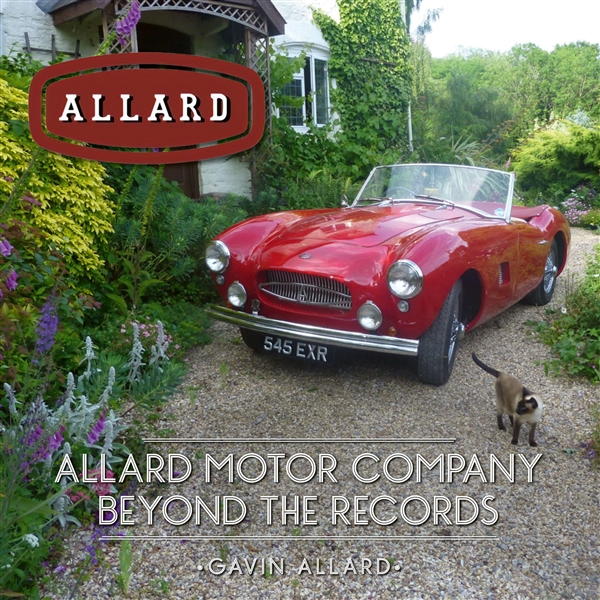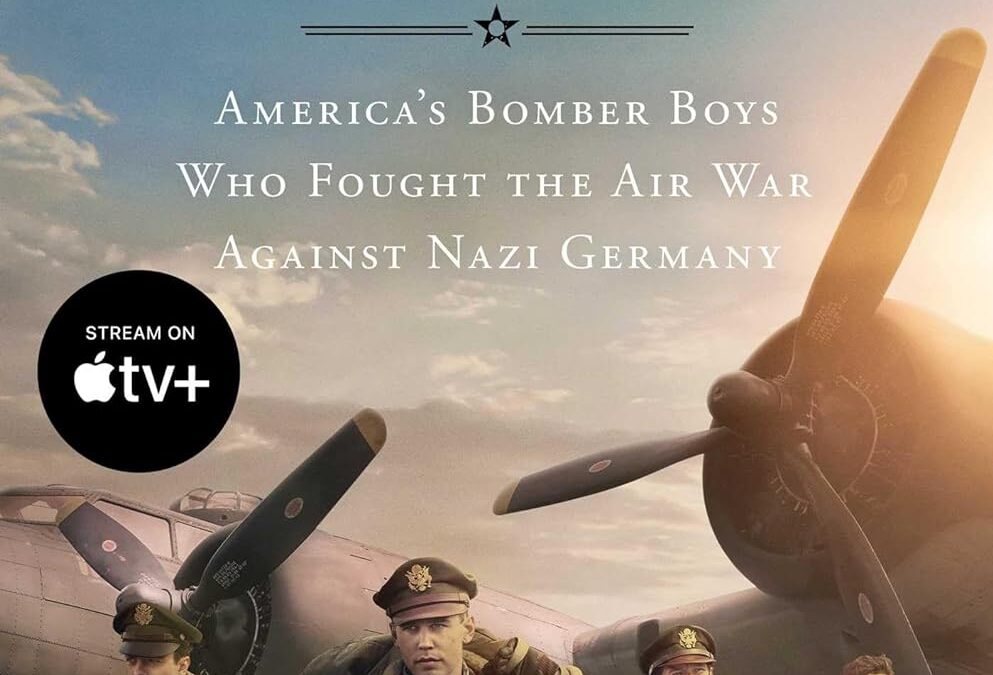
The inspiration for the major Apple TV+ series, streaming now!
The riveting history of the American Eighth Air Force in World War II and the young men who flew the bombers that helped beat the Nazis and liberate Europe, brilliantly told by historian and World War II expert Donald L. Miller. The Masters of the Air streaming series stars Austin Butler and Callum Turner, and is produced by Tom Hanks and Steven Spielberg, the legendary duo behind Band of Brothers and The Pacific.
Masters of the Air is the deeply personal story of the American bomber boys in World War II who brought the war to Hitler’s doorstep. With the narrative power of fiction, Donald Miller takes you on a harrowing ride through the fire-filled skies over Berlin, Hanover, and Dresden and describes the terrible cost of bombing for the German people. Masters of the Air is the deeply personal story of the American bomber boys in World War II who brought the war to Hitler’s doorstep. With the narrative power of fiction, Donald Miller takes you on a harrowing ride through the fire-filled skies over Berlin, Hanover, and Dresden and describes the terrible cost of bombing for the German people.
Fighting at 25,000 feet in thin, freezing air that no warriors had ever encountered before, bomber crews battled new kinds of assaults on body and mind. Air combat was deadly but intermittent: periods of inactivity and anxiety were followed by short bursts of fire and fear. Unlike infantrymen, bomber boys slept on clean sheets, drank beer in local pubs, and danced to the swing music of Glenn Miller’s Air Force band, which toured US air bases in England. But they had a much greater chance of dying than ground soldiers.
The bomber crews were an elite group of warriors who were a microcosm of America—white America, anyway. The actor Jimmy Stewart was a bomber boy, and so was the “King of Hollywood,” Clark Gable. And the air war was filmed by Oscar-winning director William Wyler and covered by reporters like Andy Rooney and Walter Cronkite, all of whom flew combat missions with the men. The Anglo-American bombing campaign against Nazi Germany was the longest military campaign of World War II, a war within a war. Until Allied soldiers crossed into Germany in the final months of the war, it was the only battle fought inside the German homeland.
Masters of the Air is “a stunning achievement” (David McCullough), “a fresh new account” (Walter Boyne, former director of the Smithsonian Air and Space Museum) of life in wartime England and in the German prison camps, where tens of thousands of airmen spent part of the war. It ends with a vivid description of the grisly hunger marches captured airmen were forced to make near the end of the war through the country their bombs destroyed.
Drawn from recent interviews, oral histories, and American, British, German, and other archives, Masters of the Air is an authoritative, deeply moving account that “accurately and comprehensively” (Lt. Gen. Bernard E. Trainor, USMC (Ret.) and coauthor of Cobra II) tells of the world’s first and only bomber war.
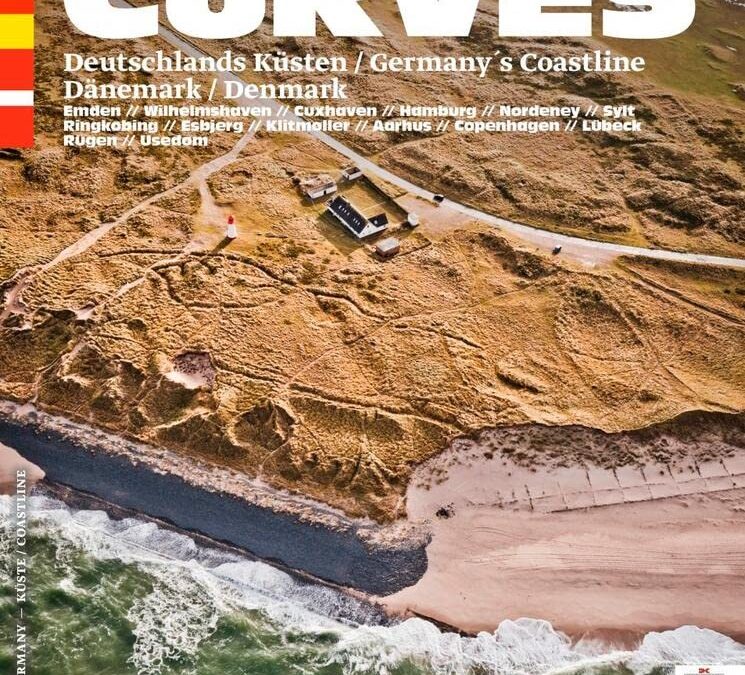
• Beautiful photographs portray the stunning coastal roads of Germany
• A new addition to a highly successful series
• Perfect tips for routes and sightseeing
You do not need to go to California for scenic coastal roads or relaxed cruising – not when you have that right on your doorstep in Europe. Instead of chewing gum, eating burgers and drinking Coca-Cola, your traveling companions will experience liquorice, tea and shrimp rolls – and, of course, Porsche. In the latest Curves volume, Stefan Bogner travels the German coastline from von Emden to Hamburg, visits the North Frisian island Sylt, and takes a trip to Denmark. From Klitmoeller he goes to Copenhagen and Lübeck. The journey comes to an end in between seaside resorts and chalk cliffs on Rügen, an island in the Baltic. Text in English and German.
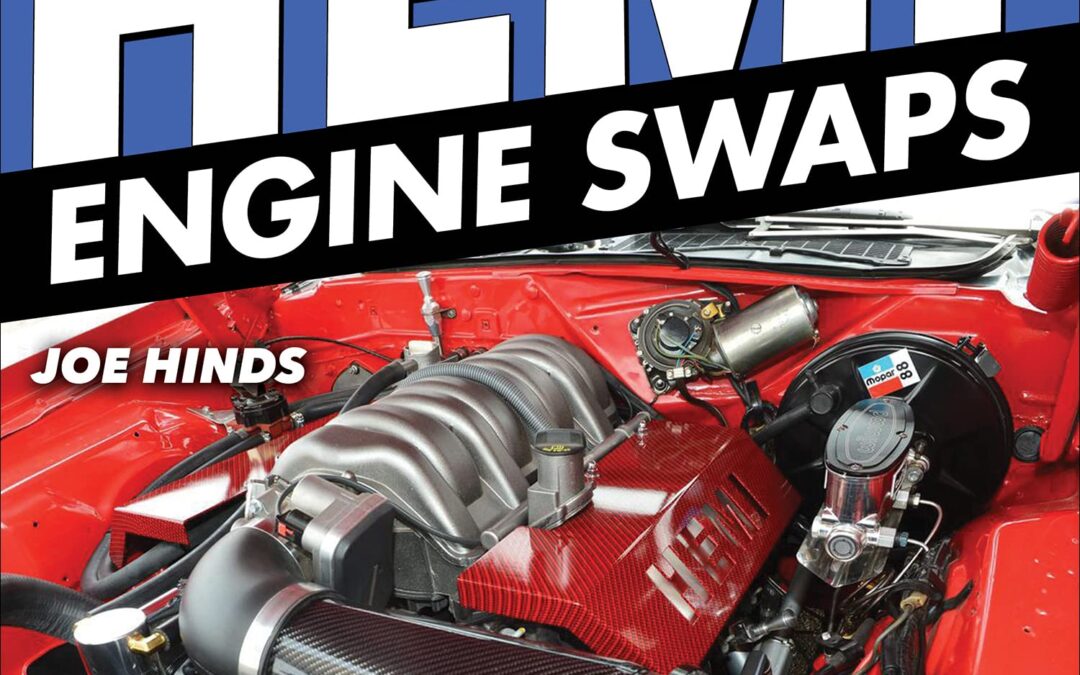
Have you made plans for a new Hemi swap into your classic car? Maybe you’re just curious about the process and want to know how much work is involved. Either way, New Hemi Engine Swaps: How to Swap 5.7L, 6.1L, 6.4L, and Hellcat Engines into Almost Anything has you covered!
Even casual enthusiasts are aware of how many people are swapping modern technology into vintage chassis. Successful LS swaps have been common for more than a decade. They seem to be everywhere among GM enthusiasts.
On the Mopar side, the new Hemi platform is now 20 years old, so plenty of salvage-yard cores are available. With the introduction of the new Hellcat in 2015 (as well as a more robust crate-engine program in recent years directly from Mopar), aftermarket manufacturers have recently seen the wisdom of making peripherals and parts to simplify the process of this swap. Suddenly, swapping a crate Hemi seems as achievable as an LS swap.
In New Hemi Engine Swaps: How to Swap 5.7L, 6.1L, 6.4L, and Hellcat Engines into Almost Anything, expert Joseph Hinds guides you through the process of turning your vintage ride into a modern street machine. The essentials are covered, including engine mounts, transmission cross members, headers that actually fit, and solutions for other common issues. Also covered are fuel-supply items (pumps and tanks) and engine-compatibility concerns (oil filter locations and oil-pan accommodations). Finally, the biggest concerns for most are the wiring, modern power train control modules (PCMs), computer controls, and fuel injection, all of which are covered here as well. There are even step-by-step instructions to fit a modern Hemi into an early-1970s-era Duster as well as a feature about programming aftermarket electronic fuel-injection (EFI) systems.
Now that the degree of difficulty in performing these swaps no longer requires a degree in computer science with welding certifications on the side, many are looking at their vintage Mopars in a new light. Whether you want to do this yourself, farm it out to a professional, or if you are just curious about how it is done, this is the guide for you.
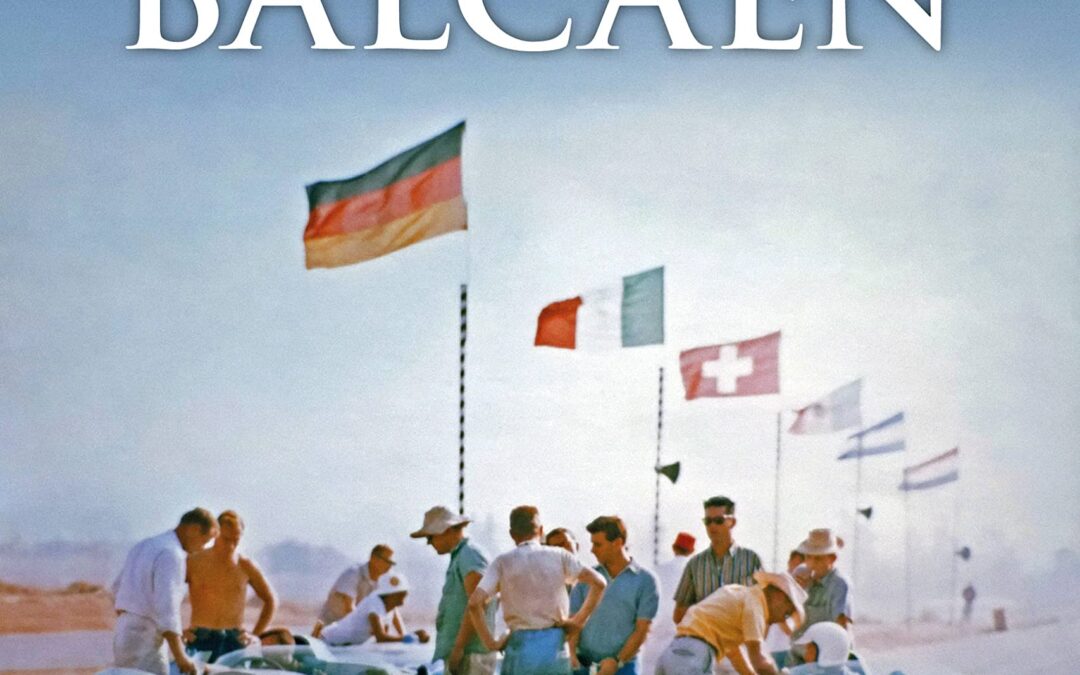
Raoul ‘Sonny’ Balcaen grew up in Los Angeles at a time when it became the epicentre of American motor racing, nurturing a vast talent pool of people whose influence has echoed through to today.
As a teenager, he successfully competed with his home-built Top Fuel dragster during the formative years of the sport. With Lance Reventlow, he worked on the famous Scarab sports cars and was standing in the dyno room when the team’s all-American Formula 1 engine was fired up for the first time. A period as Jim Hall’s crew chief and a close association with Carroll Shelby added to the know-how that guided him towards becoming a successful entrepreneur and led to all that followed.
- Aged 17, Balcaen built his own Top Fuel drag racer, the ‘Bantamweight Bomb’, which he developed relentlessly and drove to many successes.
- His role in the fabulous Scarab sports cars — the landmark all-American racers — and insights into life with their creator, the incomparable Lance Reventlow.
- Working as crew chief to the brilliant Jim Hall, preparing and running his Lotus Eleven and Lister-Chevrolet long before the famous Chaparrals emerged.
- A second spell with Scarab, this time with the Formula 1 project — the first American Grand Prix car — plus a special job for Reventlow converting a Scarab sports racer into a street car.
- Onwards into setting up his own successful business, IECO (Induction Engineering Co), to create and sell high-grade performance and appearance accessories, with Chevrolets — especially Corvair and Vega — featuring strongly.
- His many-faceted dealings with Carroll Shelby, leading to consultancy and even assignments as occasional Shelby American company pilot.
- Along the way we meet many other big names of the era, including Chuck Daigh, Bruce Kessler, Warren Olson, Dick Troutman, Tom Barnes, Phil Remington, Ken Miles, Leo Goossen, Jim Travers, Frank Coon, Ed Donovan and Pete Brock.
This engaging memoir is the very personal history of a momentous time and place in which we meet a who’s who of West Coast road-racing heroes.
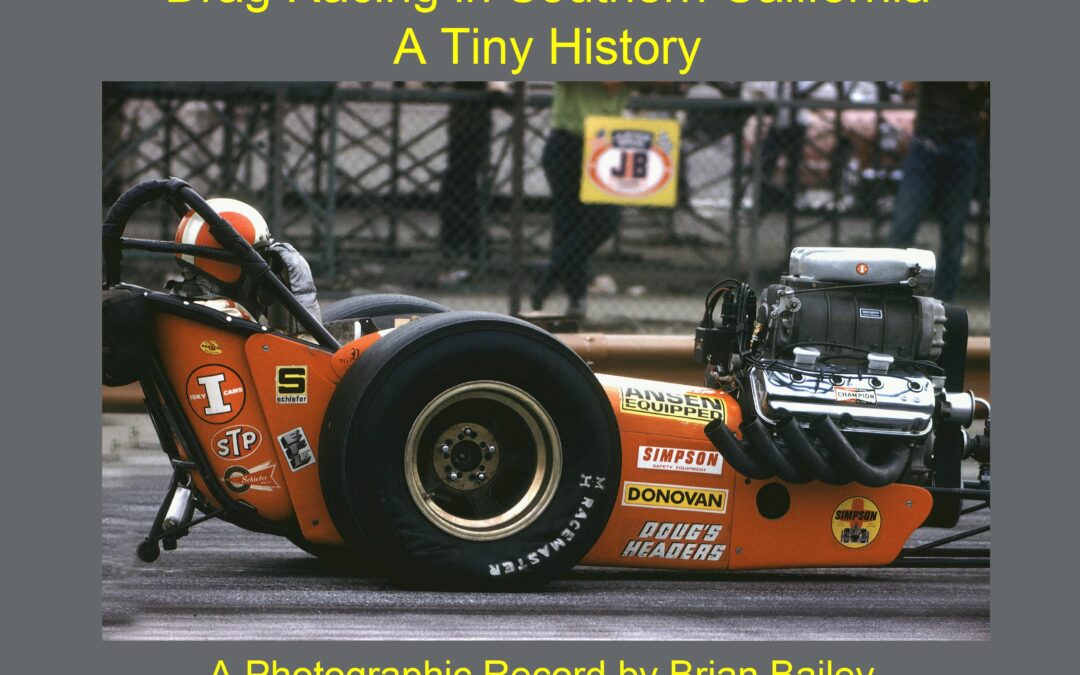
Images taken at Irwindale Speedway,Orange County Race Track, Pomona Raceway and Ontario Motor Speedway from 1970 through 1984.Other images included from 1996 though 2000. Most images never before published.
11 x 8 193 pages
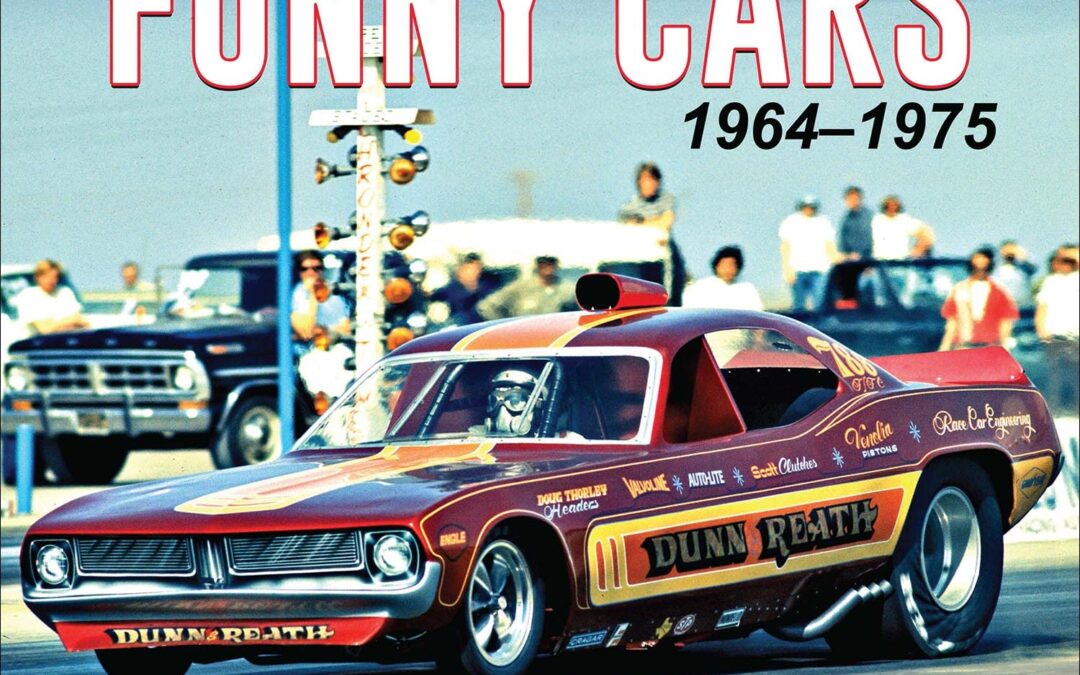
Blast through the evolving early years of Funny Car drag racing when doorslammers morphed into flip-top rail monsters. The era features historic mounts from Arnie “the Farmer” Beswick, Al “the Flying Dutchman” Vanderwoude, “Jungle” Jim Liberman, Don “the Snake” Prudhomme, and many more!
The metamorphosis from doorslammers to fiberglass flip-top dragsters wasn’t ever a cut and dry plan. As drag racers pushed the envelope for more speed, a series of innovations quickly evolved and refined the genre.
Funny Cars cut their teeth in the A/Factory Experimental (A/FX) and Experimental Stock (X/S) classes in 1964 with the 2-percent Mopars that looked funny with their axles moved forward. However, it was Jack Chrisman’s supercharged, nitro-fueled 427 Supercharged Factory Experimental (S/FX) Comet Caliente that trailblazed the class on which the NHRA turned its back and the AHRA fully accepted. Showmanship became the draw in the dawn of Funny Car with half-track burnouts and flame-throwing headers that packed fans five deep at the fence.
By 1969, the NHRA had no choice but to create a class for these nitro-breathing, flip-top-sporting rail bruisers, indoctrinating the Funny Car (F/C) class at the Winternationals with 40 cars vying for 16 places in the field. The rest, as they say, is history!
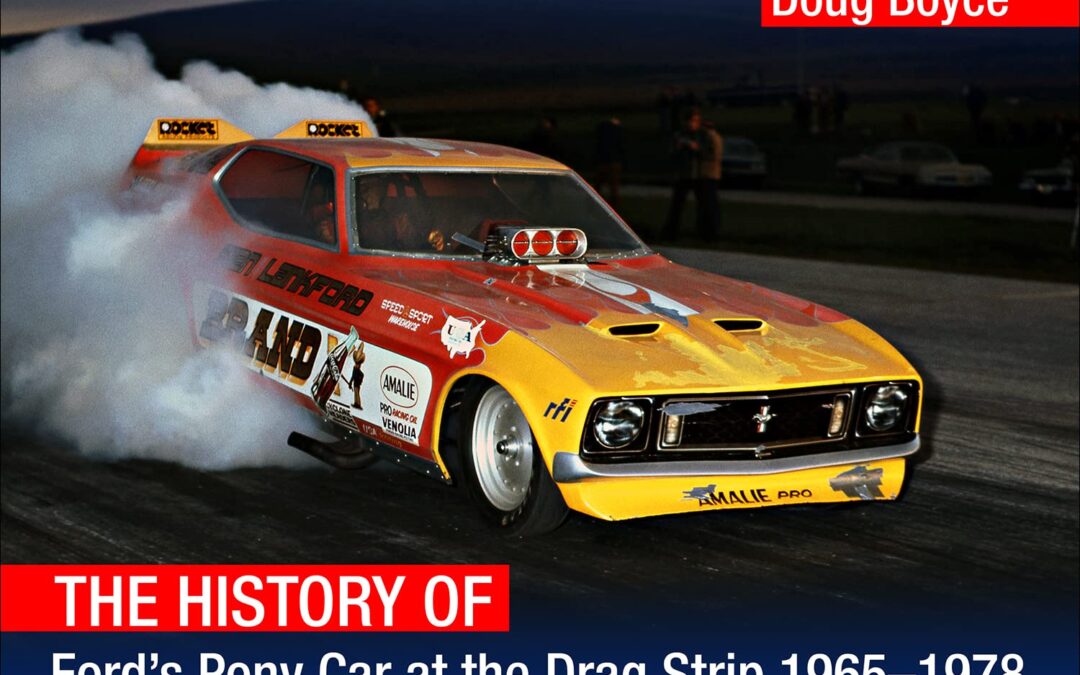
Blast down the quarter mile in the first two generations of Ford’s legendary pony car across all drag racing classes in Quarter-Mile Mustangs!
Since first becoming a mass-market success in mid-1964, the Ford Mustang has made millions of passes down the quarter mile on sanctioned drag strips. With styling flared toward the youth, aftermarket parts manufacturers saw an enormous opportunity to produce go-fast components to aid in propelling Ford’s pony car down the 1320. The success of these cars was immediate.
In the hands of successful and seasoned pros, such as Gas Ronda, Bill Lawton, and Dick Brannan, Ford unleashed the devastatingly potent 1965 A/FX Mustang fastback, which was built by Blue Oval stalwarts Holman & Moody with the 427 SOHC (Cammer) engine that unleashed havoc on mother Mopar.
From those very first factory drag cars through the fabled 1968-1/2 Cobra Jets, drag racing historian Doug Boyce highlights the many successes of pioneers, such as “Dyno” Don Nicholson, Les Ritchey, Phil Bonner, Hubert Platt, and Al Joniec. However, it’s not just all doorslammers. As A/FX transitioned into Funny Car, a whole new chapter in Mustang drag racing was written with Mickey Thompson taking the reins and steering Mustangs to success throughout the late 1960s and early 1970s.
The muscle car-era Mustangs joined the Mustang II and soldiered on the best they could as ever-changing rules hampered Ford’s new pony body, with drivers Bob Glidden and Nicholson trying to squeeze every bit of performance out of the diminutive pony.
Quarter-Mile Mustangs: The History of Ford’s Pony Car at the Drag Strip 1964-1/2-1978 brings forth the most in-depth coverage of these cars at the drag strip. Don’t get caught sleeping at the light!
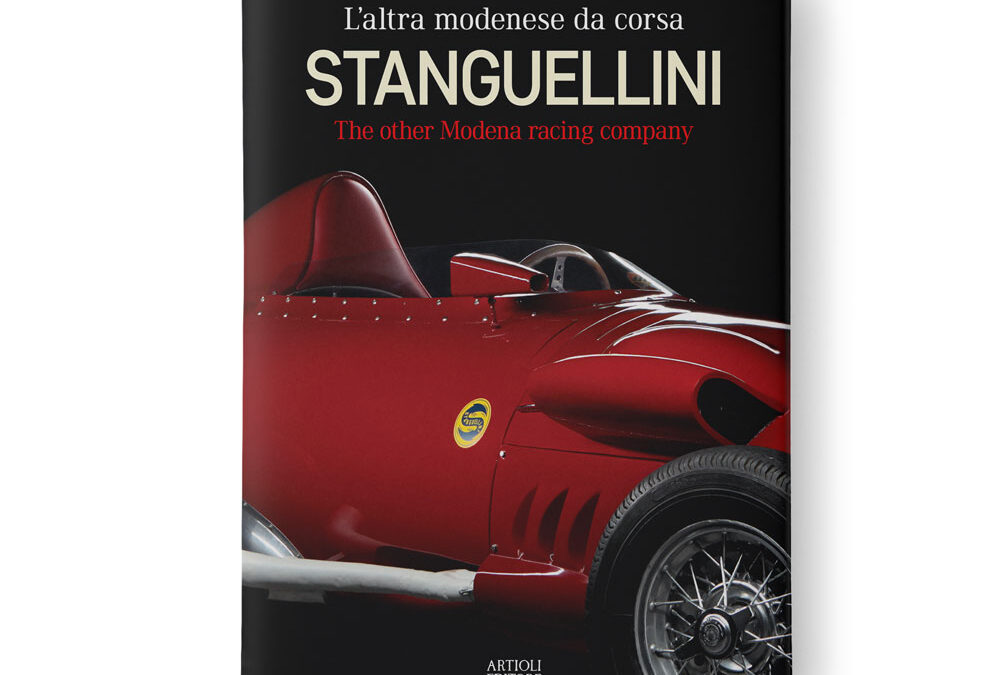
The first of the ten chapters included in the book is a bit of a provocation. In fact, it recalls how a ‘small’ Stanguellini Sport 1100 car, thanks to excellent road holding, beat the new and still ‘green’ Ferrari with a 12-cylinder engine of 1500 cc, in some races of the 1947 season, the debut one for the newly-founded Prancing Horse manufacturer. The ‘snub’ received from another Modena-based company, which was just as committed to the construction of sports cars, albeit with a smaller engine displacement, certainly annoyed Enzo Ferrari but in any case, he had very little to complain about. He had too much respect and friendship for the ‘Magician’ Vittorio Stanguellini, ever since the latter showed up in Modena racing circles in the company of his father Francesco, a pioneer of local motorsport. Stanguellini of Modena was a large family: in the second half of the 19th century, Celso, father of Francesco Sr., had founded a company for the construction of orchestral kettledrums with patented mechanical tuning. From there, it was a short step to the ‘mechanics’ of automobiles: Francesco Sr. became Fiat’s first representative in Modena, while his son Vittorio later extended the agreement with the Turin-based company, but his passion and technical ability also lead to the tuning and construction of racing cars as early as the early 1930s. Vittorio certainly knew his way around and he put together a small empire, based above all on the Sport 750 and 1100: the workshop in Viale Moreali, and later the larger one in Via Schedoni, become a worldwide benchmark, which from 1958/59 was confirmed with the construction of the Formula Junior cars (what would later become Formula 3), intended for up-and-coming drivers. The Stanguellini Formula Junior with a 90 hp Fiat 1100 engine and a top speed of 200 km/h was the most popular and successful car in the crowded category. However, the Formula Junior regulations required that the engine was derived from a production car, albeit with a wide range of tuning possibilities. As he was linked to Fiat, in the 1960s Vittorio Stanguellini, now flanked by his son Francesco Jr., built some Formula Junior (including the modern ‘Delfino’) and then Formula 3 single-seaters, with engines derived from the ‘1300’ and ‘124’ of the Turin-based company. Thanks to the copious archive material of the brand (photographs and documents), the book reconstructs in detail the history of the manufacturer from the blue ‘S’ on a yellow background (the colours of Modena), summarized by the extensive Museum, set up at the time by Francesco and now impeccably curated by his daughter Francesca: fifth generation of the ‘racing’ Stanguellini family. A chapter of the book is dedicated to the Museum and it is basically a ‘guided tour’ of the cars and the curiosities it hosts. The same cars, perfectly restored, were photographed outside in a spectacular way and can be admired in the ‘portfolio’ combined with the same book.
Hardcover
English and Italian Text

First published in 1968, and now back in print for the first time in ten years, The Bikeriders explores firsthand the stories and personalities of the Chicago Outlaws Motorcycle Club. This journal-size volume features original black-and-white photographs and transcribed interviews by Lyon, made from 1963 to 1967, when he was a member of the Outlaws gang. Authentic, personal and uncompromising, Lyon’s depiction of individuals on the outskirts of society offers a gritty yet humane perspective that subverts more commercialized treatments of Americana. Akin to the documentary style of 1960s-era New Journalism made famous by writers such as Hunter S. Thompson, Joan Didion and Tom Wolfe, Lyon’s photography is saturation reporting at its finest. The Bikeriders is a touchstone publication of 1960s counterculture, crucially defining the vision of the outlaw biker as found in Easy Rider and countless other movies and photobooks.

Richly illustrated and entertainingly written, The Big Book of Tiny Cars presents lively profiles of the automotive world’s most famous—and infamous—microcars and subcompacts from 1901 to today.
From tiny homes to little lending libraries and even tiny food, people everywhere are resetting the premium they put on size. Fact is, the automotive industry has a “tiny” history going back to the car’s earliest days.
Beginning with the Curved Dash Oldsmobile and continuing through prewar classics such as the Austin Seven and Hanomag Kommissbrot, The Big Book of Tiny Cars is truly international in scope. Witness diminutive cars like the Bond Minicar and the BMWIsetta introduced to fuel-deprived postwar Europe, and continue through the classic 1950s microcars and ’70s subcompacts, right up to today’s tiny cars and electric vehicles (EVs) fromthe likes of Smart and Fiat.
In addition to iconic curiosities like the frog-like Goggomobil Dart, the futuristic Sebring Vanguard Citicar, and the three-wheeled Reliant Robin, you’ll read about more familiar classics like the VW Beetle, MiniCooper, and Crosley Super Sport. Other manufacturers represented include Honda, Datsun, Mitsubishi, Trabant, Heinkel, Renault, and Messerschmitt, to name a few.
- Each car is profiled with an entertaining and informative history and a fact box.
- Imagery includes archival photos, period ads, and modern photography.
- In all, more than 100 cars are included, from the weird to the sublime.
Gas, diesel, or electric…tiny cars have a rich and curious heritage reflective of motorists’ concerns for their pocketbook, the environment, or both. The Big Book of Tiny Cars is your ultimate collection of microcars, minicars, bubble cars, kei cars, subcompacts, and compacts that have been built, sold, and driven all over the globe for 120 years.
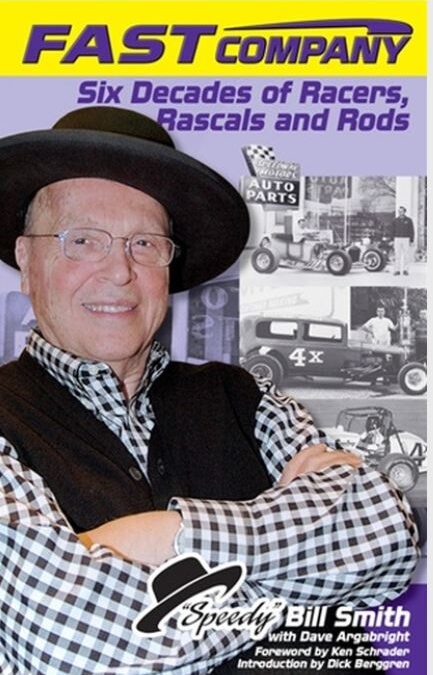
If you’re a racer, a race fan, a hot rodder, a businessman…heck, just about anybody who loves going fast will enjoy Fast Company. Speedy Bill Smith was an icon in both auto racing and the world of automotive performance, and in this book he shares the great stories and experiences of his amazing, unlikely life. He survived a couple of near-death experiences (literally), parlayed $300 into a performance empire, chased race cars and hot rods from coast-to-coast, rubbing shoulders with countless characters and rascals over the past 60 years.
This is an American success story…a little off-color, a little politically-incorrect, and a little over the top. As a car owner, Speedy Bill raced to win, and didn’t mind if he got under the skin of his competitors…in fact, he LOVED getting them fired up. Along the way he won too many races to count, made a ton of friends (and maybe just a few who weren’t so friendly), and rewrote the record books on many occasions.
Over the past ten years, Dave Argabright has teamed up with some of racing’s greatest personalities…Brad Doty, Jack Hewitt, Earl Baltes, Chris Economaki, and Doug Wolfgang. You’ll find Dave’s unmistakable style on these pages, and you’ll hear Speedy Bill’s voice in every word.
Jan Opperman? The real story. Surviving in business? The unvarnished truth about what it takes. Rough-and-tumble racing? Without pulling a punch. Wild and outrageous people? Right here, in the flesh.
More than anything, this is a book that will entertain and inform you. No B.S., no sugar-coating…just the world according to Speedy Bill!
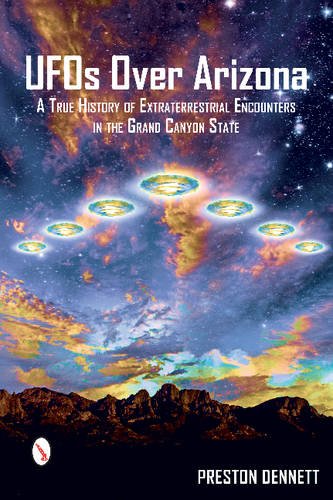
Arizona has been a UFO hotspot for more than 100 years. This first-time comprehensive history of extraterrestrial encounters in the Grand Canyon State includes 81 locations that provide a dazzling array of sightings, landings, face-to-face encounters, abductions, and even UFO crash/retrievals. Read about some of the world’s most influential alien events that have taken place in Arizona, including the Paradise Valley UFO crash, the Travis Walton Abduction, the Phoenix Lights, and many others. Explore both well-known and never-before-published cases. Examine the research of pioneering investigators James McDonald, one of the first scientists to explore UFOs, and Coral and Jim Lorenzen, who formed the Aerial Phenomena Research Organization (APRO), the first successful UFO citizens group. Connect with the ongoing story of Sedona, one of Arizona’s major UFO areas. Join in on an exploration into the magic and mystery of Arizona’s UFOs.

2nd Edition
This officially licensed 120th anniversary edition of Indian Motorcycle tells the complete story of Indian Motorcycle, America’s first mass-produced motorcycle maker, from its start as a bicycle manufacturer to the purchase of the brand by Polaris Industries in 2011 and the subsequent new Indian motorcycles—updated to include new photography, the story of the latest models, including the FTR1200, Chieftain, Challenger, and Roadmaster, and Indian Motorcycle’s return to racing.
In the early years of the 20th century, Indian Motorcycle dominated the world’s racetracks and showrooms, earning the brand a worldwide reputation for quality, performance, reliability, and technical innovation with such classic machines as the Chief, Scout and Four. But the once-mighty company fell on hard times and in 1953 was forced to file bankruptcy.
The Indian Motorcycle brand never quite died, however, thanks in large part to fanatically devoted enthusiasts, who tried to resurrect it for over half a century. Finally, Polaris, maker of the highly regarded Victory brand of motorcycles, purchased the brand and released the Chief and Scout, models that once again restored Indian Motorcycle to its rightful place in the motorcycle pantheon.
Indian Motorcycle is the most complete and up-to-date history of this classic American motorcycle.
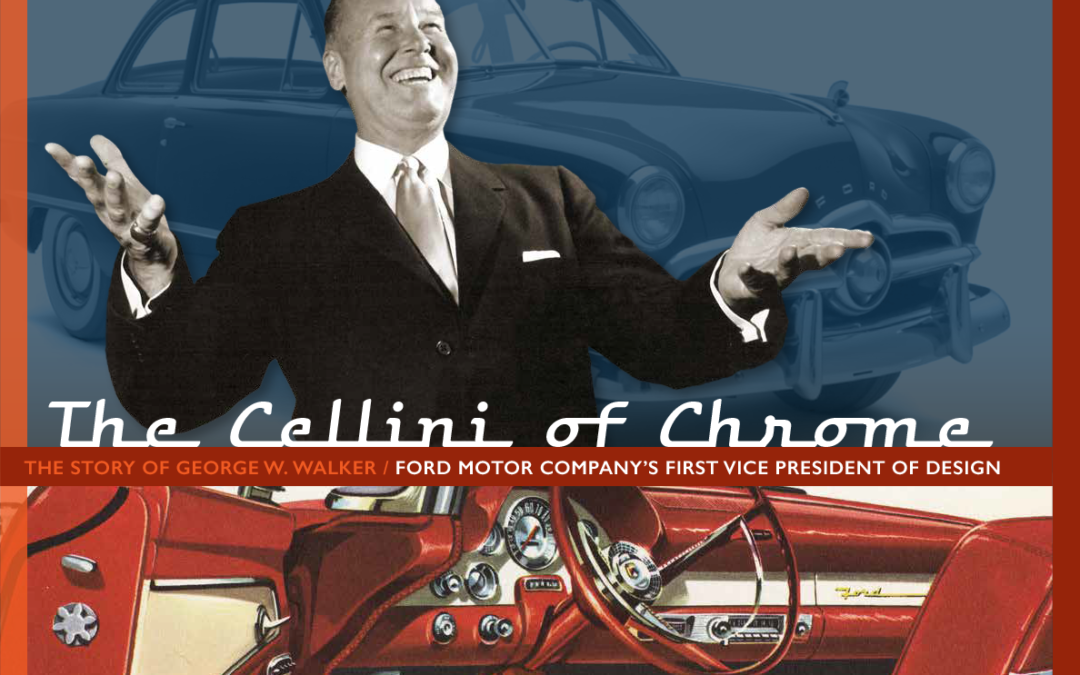
Henry Dominguez’s newest book The Cellini of Chrome, introduces the surprisingly unknown but truly fascinating career of George Walker, the Ford Company’s first full Vice President of Styling.
In the same flamboyant vein as other design greats such as Harley Earl, Gordon Buerig, Vergil Exner, Raymond Loewy and William “Bill” Mitchell, Walker developed the standard for key Ford Motor Company Products for the 1950s and ‘60’s. Beginning with the enormous success of the 1949 Ford, George became the catalyst for the iconic appearance of Ford, Mercury and Lincoln models, elevating Henry’s company to one of the all-around best-selling Automotive operations in the World.
With a personal history anything but bland, his elegant style of dress, appeal to attractive women, signature winning smile, and willingness go toe to toe with industry giants such as Henry Ford II (“The Deuce”) and other top executives, Walker made himself a key figure in the highly competitive environment of mid-20th Century automotive design.
His story is a must for any automotive enthusiast looking for an inside view of how the stylistic character of Ford products was created by Walker and his associates.
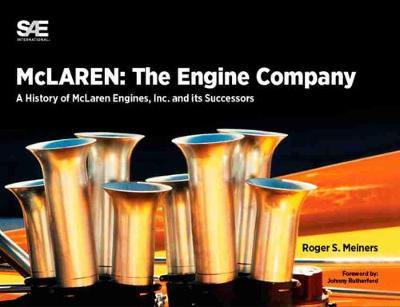
McLaren: The Engine Company is the previously untold story of McLaren Engines, an American company founded in 1969 by Bruce McLaren and his partners to build engines for McLaren’s legendary Can-Am and Indy Cars. From this base in suburban Detroit were born the mighty big-block Chevrolet V8s that powered the iconic orange cars to two of their five consecutive Cam-Am championships. McLaren’s busy dyno rooms also spawned the howling turbo Offenhausers that put Mark Donahue and Johnny Rutherford in Victory Lane at Indianapolis three times between 1972 and 1976.
For decades this non-descript shop was the hotbed of horsepower for factories and top independents alike. McLaren Engines developed the turbocharged Cosworth DFV Formula 1 engine that powered Indy cars for both Team McLaren and Penske Racing. It rendered BMW’s turbo engine for U.S. IMSA racing that later became BMW’s Formula 1 weapon. The long list of race engines developed here powered Buick Indy and IMSA cars, BMW GTP cars, Cadillac LeMans prototypes, Porsche Trans-Am 944s and David Hobbs’ F5000 single seaters. There were McLaren-built big-block turbo V8s for offshore boat racing and even a Cosworth-Vega engine for American dirt tracks!
Author Roger Meiners combines his life-long passion for motor racing and technology with his historian’s sensibilities to make the engines, cars, and key personalities come alive within this book’s pages. Ride along with Meiners as he uncovers little-known details of the company’s transition from a race shop to an engineering company, developing lust-worthy performance cars such as the sensational 1987 Buick GNX, the 1989 Pontiac Grand Prix Turbo, the FR500 Ford Mustang concept, and other projects that the public never saw. Today the company, known as McLaren Engineering, is a subsidiary of Canada-based Linamar Corporation, and is sought after by global automakers for its unrivaled testing, development and manufacturing capability.
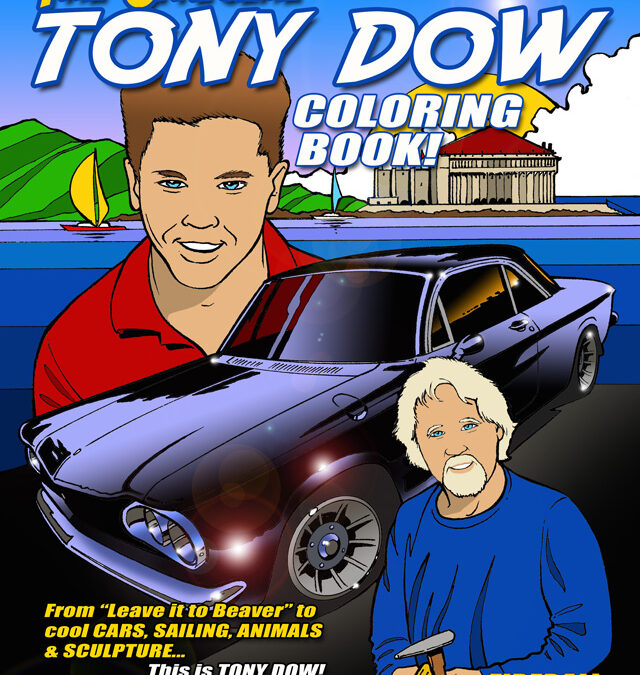
The World’s First Autobiographical Coloring Book written by Tony Dow (Wally on LEAVE IT TO BEAVER) and his wife Lauren and Illustrated by Fireball Tim of Fireball Publishing.
From Leave it to Beaver to cool cars, sailing, animals and sculpture, …This is Tony Dow
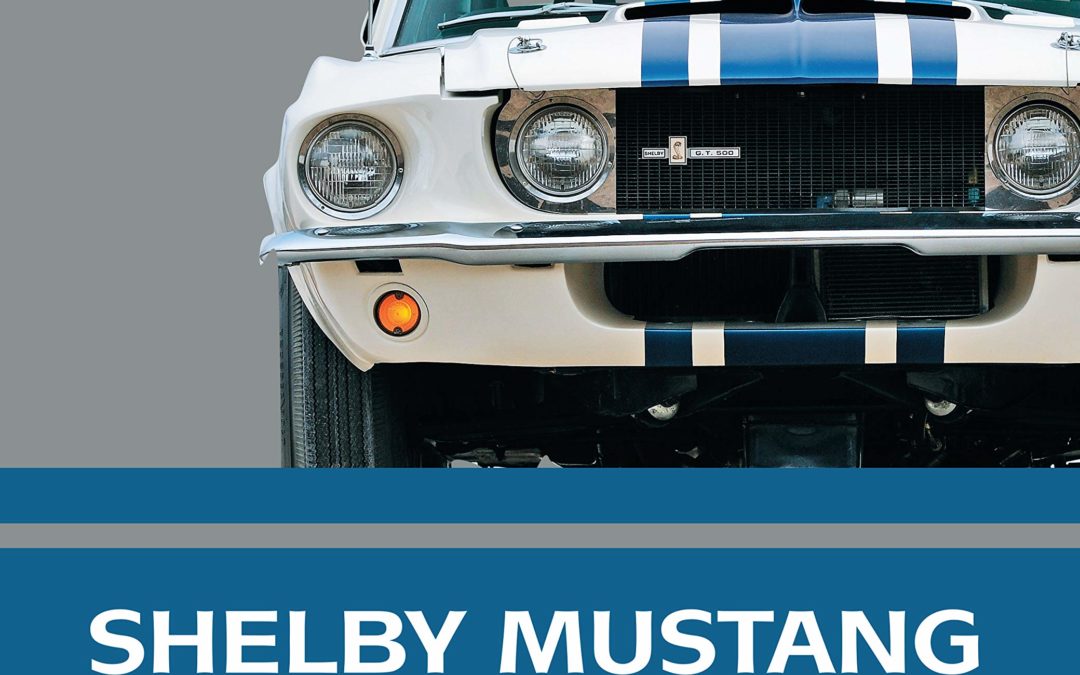
Shelby Mustang details the entire story of these fantastic cars, from the early prototypes built in Shelby’s Los Angeles shop to today’s Ford-engineered high-tech performers.
Written by one of the world’s foremost authorities on Shelby automobiles, critically acclaimed author Colin Comer, and with a foreword by Lee Iacocca, the American automobile executive credited with the successful development of the Mustang, this is the definitive account of the Shelby.
When Ford wanted to toughen up its super-successful new Mustang, they approached Carroll Shelby to give it the performance image it so sorely lacked. Beginning with a 1965 “K-Code” 289-cubic-inch-powered Mustang fastback, Shelby applied the same formula that had made his Cobra sports cars such devastating performers both on and off the track: more horsepower, less weight, balanced handling.
The GT350 quickly established itself as a bonafide force in SCCA B-Production racing, twisting back roads, and boulevards alike—setting the course for future Shelby Mustangs, like the big-block GT500. Though those original Shelby Mustangs were done by 1970, Ford dusted off its Shelby relationship in 2006 and has been producing high-performance Ford Mustang Shelbys ever since.
This is a must-have read for any fan of American performance cars, whether you’re a muscle-era original or a 21st-century stormer.
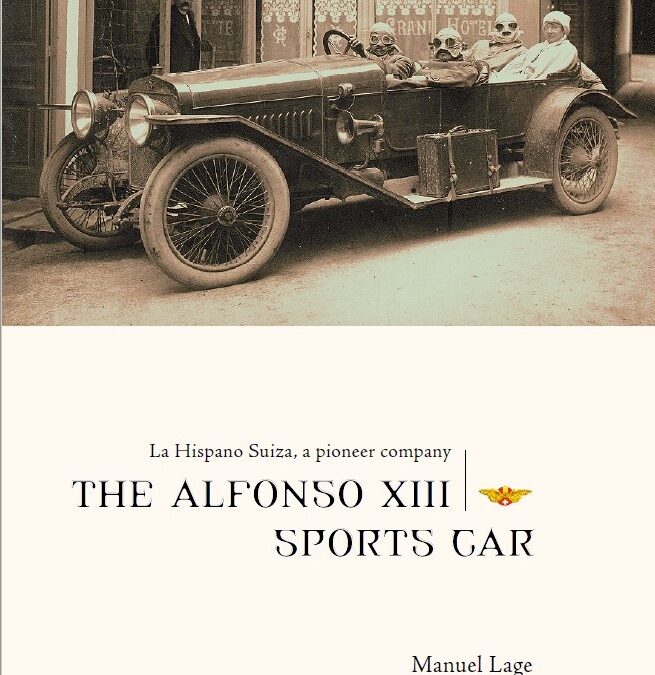
A thorough study and more than 500 historical pictures depict the activity of La Hispano Suiza, one of the most innovative car factories at the beginning of the 20th century. The book describes in detail the design and characteristics of the engines that gave origin to the modern concept of a sports car -a light vehicle with an exceptionally high performance-. Together with the technical details, you will get to know the most famous car races of that time and the celebrities around them.






